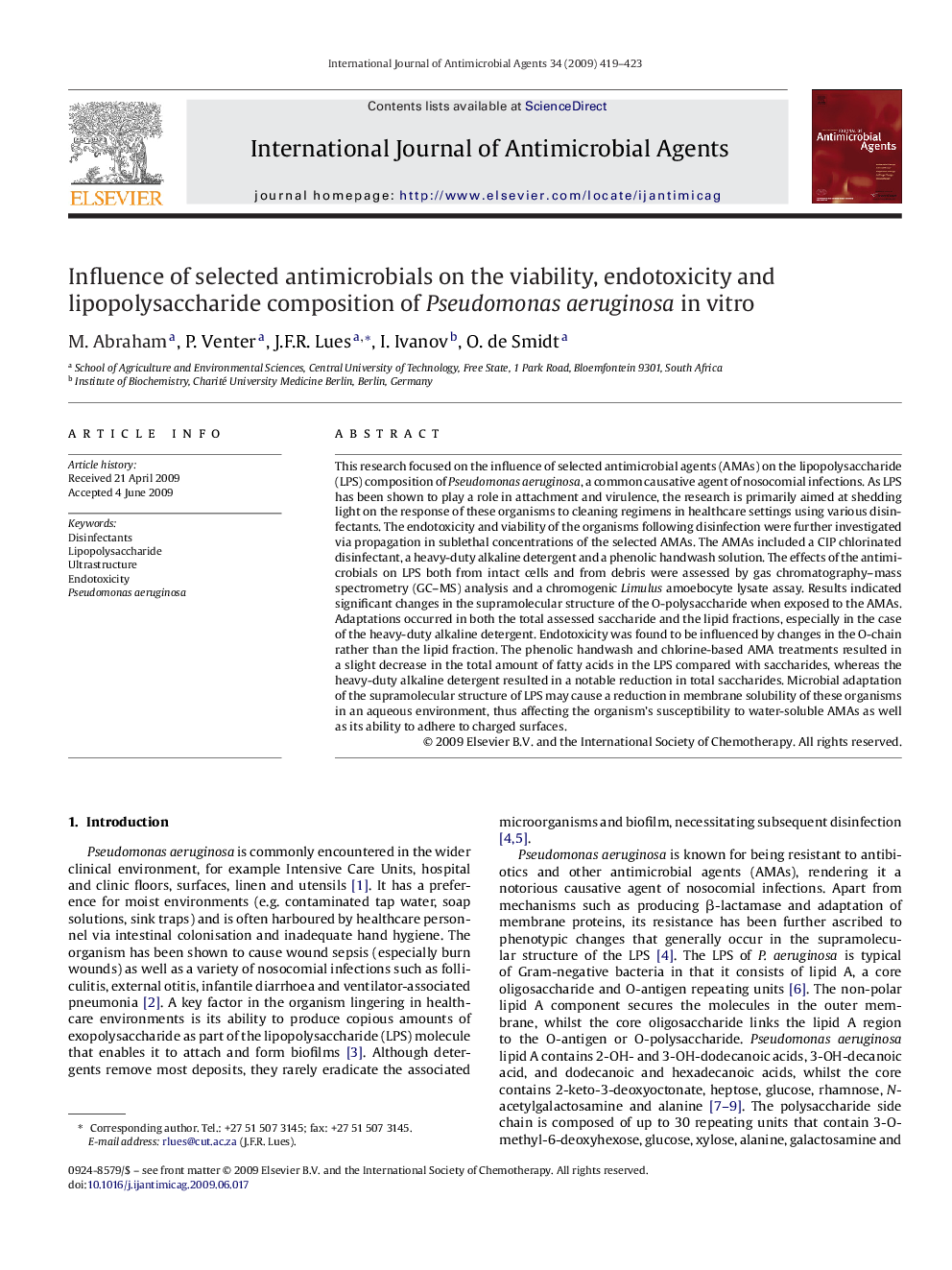| Article ID | Journal | Published Year | Pages | File Type |
|---|---|---|---|---|
| 3359705 | International Journal of Antimicrobial Agents | 2009 | 5 Pages |
This research focused on the influence of selected antimicrobial agents (AMAs) on the lipopolysaccharide (LPS) composition of Pseudomonas aeruginosa, a common causative agent of nosocomial infections. As LPS has been shown to play a role in attachment and virulence, the research is primarily aimed at shedding light on the response of these organisms to cleaning regimens in healthcare settings using various disinfectants. The endotoxicity and viability of the organisms following disinfection were further investigated via propagation in sublethal concentrations of the selected AMAs. The AMAs included a CIP chlorinated disinfectant, a heavy-duty alkaline detergent and a phenolic handwash solution. The effects of the antimicrobials on LPS both from intact cells and from debris were assessed by gas chromatography–mass spectrometry (GC–MS) analysis and a chromogenic Limulus amoebocyte lysate assay. Results indicated significant changes in the supramolecular structure of the O-polysaccharide when exposed to the AMAs. Adaptations occurred in both the total assessed saccharide and the lipid fractions, especially in the case of the heavy-duty alkaline detergent. Endotoxicity was found to be influenced by changes in the O-chain rather than the lipid fraction. The phenolic handwash and chlorine-based AMA treatments resulted in a slight decrease in the total amount of fatty acids in the LPS compared with saccharides, whereas the heavy-duty alkaline detergent resulted in a notable reduction in total saccharides. Microbial adaptation of the supramolecular structure of LPS may cause a reduction in membrane solubility of these organisms in an aqueous environment, thus affecting the organism's susceptibility to water-soluble AMAs as well as its ability to adhere to charged surfaces.
